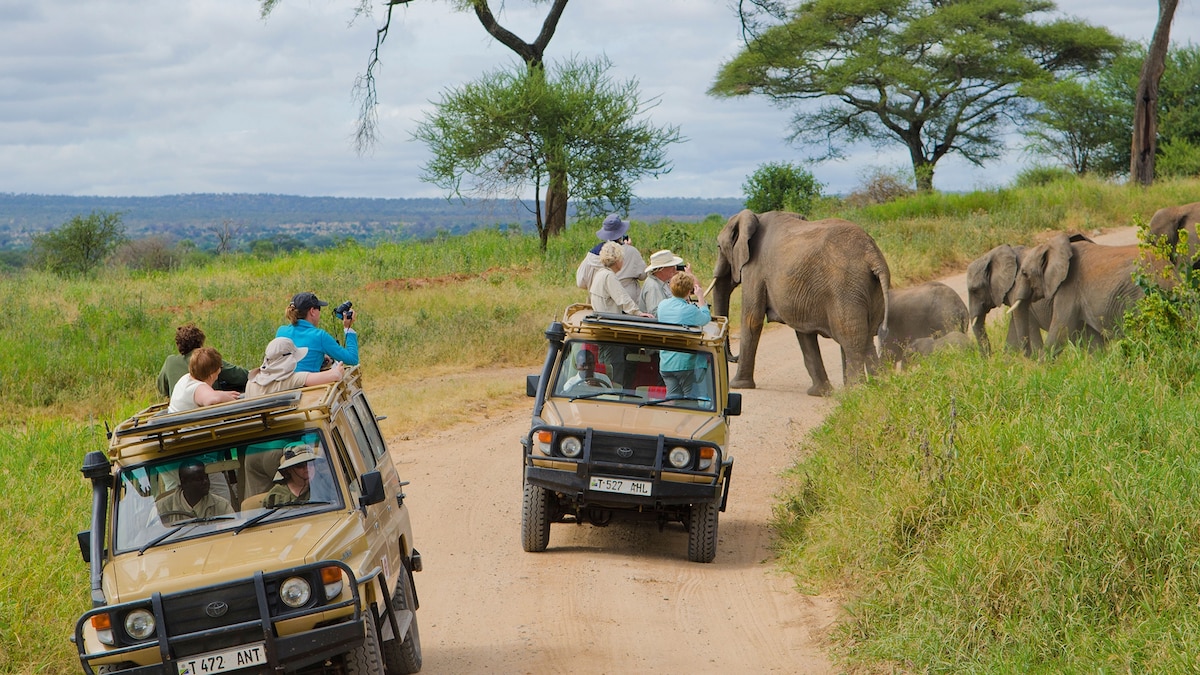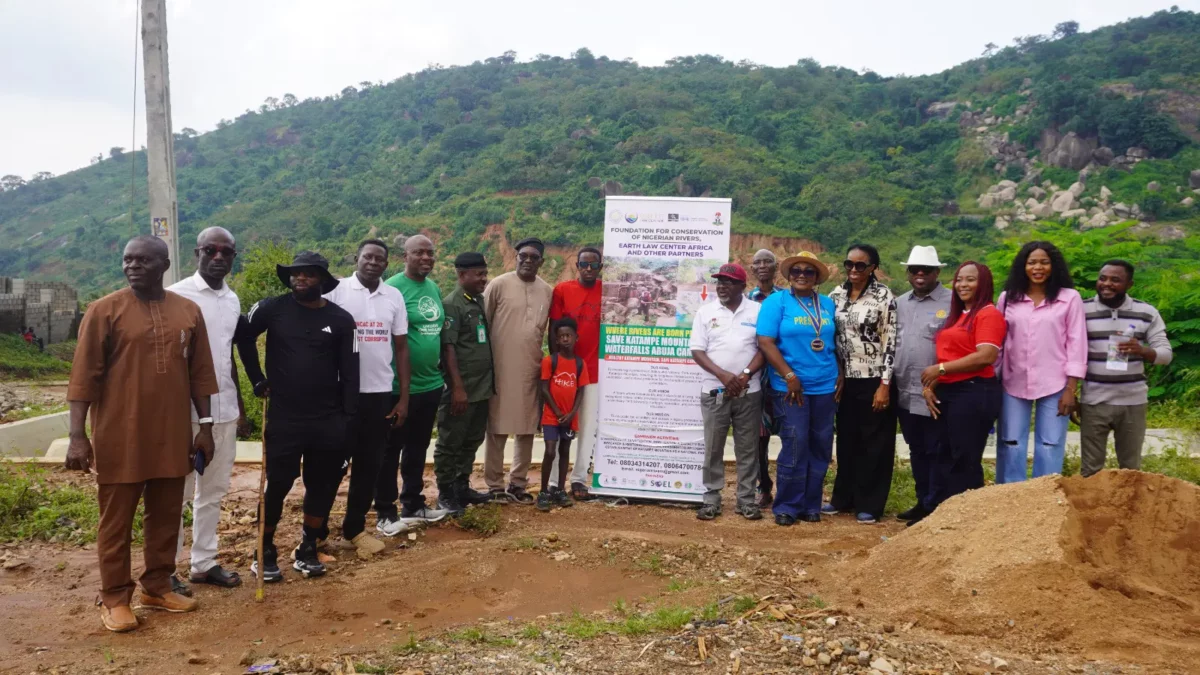Copyright National Geographic

There’s much more to the central African nation than safari. Tanzania is a country that doesn’t do things by halves. The big, bold, beautiful nation lays claim to Africa’s highest mountain (Kilimanjaro) and its second-largest national park (Nyerere). It has portions of the continent’s deepest and biggest lakes (Tanganyika and Victoria, respectively) and harbours some of the world’s finest beaches (on Zanzibar and beyond). It also has the largest intact volcanic caldera (wildlife-packed Ngorongoro) and stages the world’s mightiest mammal migration, with a million-plus wildebeest circling the Serengeti each year. Those are just some of the highlights — read on to discover many more. 1. Marvel at blood-red Lake Natron Gazing across Lake Natron gives a sense of what it might have been like at the very birth of Africa. Guarded by the puffing cone of still-active Ol Doinyo Lengai — the Maasai’s ‘Mountain of God’ — this is a stark, strange, primordial-feeling place, seemingly untouched by human hands. More than that, it seems actively hostile to most forms of life. For a start, it’s hard to reach, requiring a rough, dramatic drive off the northern safari circuit. But, also, the lake’s waters are blood-red, extremely shallow, encrusted in ash, caustically alkaline and often scalding-hot. Incredibly, some animals have adapted to these harsh conditions, not least 2.5 million lesser flamingos, which come to feed on Natron’s algae — it’s what gives them their rosy feathers. Activities here include walks with Maasai guides to the surreal lakeshore and through a rocky gorge to Engare Sero Falls, for a cooling dip in the pools below. 2. Explore Ngorongoro Crater The Ngorongoro Crater would be a remarkable sight even if it were empty of animals. Formed when the volcano collapsed in on itself following an enormous eruption some 2.5 million years ago, it’s the world’s largest intact caldera, measuring 10 to 12 miles across. Its rugged walls soar up to 2,000ft, encircling seasonal swamps, permanent springs, a shallow soda lake, a forest of yellow fever trees and open grassy plains. But it isn’t devoid of life. On the contrary, the crater supports one of the densest concentrations of large mammals on the continent: black rhinos, wallowing hippos, big tuskers, vast herds of zebra and wildebeest, along with large numbers of attendant predators — chances of seeing lion and hyena are high. There are no lodges within the crater itself, but there are several on the rim (and nearby) that run game drives down inside. Expect plenty of other vehicles, but remarkable animal encounters. 3. Follow the Great Migration through the Serengeti There’s arguably no wilder spectacle than this: the mass movement of millions of ungulates around one of Africa’s greatest ecosystems. The Serengeti, with its sweeping grassy savannah, rocky kopjes, flat-topped acacias and profusion of animal life, fully justifies the label of ‘iconic’. Every year, a grunting, dust-kicking throng of up to two million wildebeest, accompanied by huge numbers of zebra, gazelles and other antelopes, migrates around it, following the seasonal grasses. Wildebeest calving occurs on the Serengeti’s southern plains between January and February before the herds start traipsing north from April. The most dramatic months are June to October, when great numbers gather to dash across the Grumeti and Mara rivers, while a host of predators — lions, leopards, hyenas and crocodiles — lie in wait. (Related: Set out to witness the world's most incredible wildlife spectacle: the Great Migration in the Serengeti.) 4. Learn about Swahili culture on Zanzibar The word ‘Zanzibar’ piques the senses — the scent of spices, the heat of sun, the sight of tropical beaches. The Indian Ocean archipelago is an excellent choice for some beach R & R after a safari or Kili climb — but it’s also unmissable for its Swahili culture. A trading post since around the ninth century, Zanzibar is a heady blend of African, Arab, Persian, Indian and European influences. You can see it all in Stone Town, a UNESCO-listed warren of narrow alleys and coralline stone palaces and townhouses with ornate balconies and intricately carved doors. Among them are bazaars bright and fragrant with fresh fish, imported cloth, beaded jewellery, cinnamon and fresh ginger. Dhow cruises hint at the journeys of past traders, while local dishes such as tangy urojo soup (made with mango, turmeric, potato and lemon) and octopus curry give a taste of Zanzibar’s multicultural history. 5. Dive off Pemba This lush, undulating island is smaller, quieter and less visited than its famous neighbour Zanzibar, offering a more offbeat Indian Ocean escape. It still has the clove-scented air, the white-sand beaches and the swaying coconut palms, but tourism is in its infancy here. Chake Chake, the main hub, is no equal to Zanzibar’s intoxicating Stone Town, but nearby is Pujni, the ruins of a 13th-century Swahili settlement, while the coast is speckled with old fishing villages, the waters a-bob with wooden ngalawa boats. The snorkelling and diving is superb, particularly off the west coast, where coral gardens throng with fish. Encounters with dolphins, manta rays and turtles are common. 6. Sail around Mafia Mafia, which lies a hundred miles south of Zanzibar, is a further leap into the laid-back. Its marine park protects a spectacular swathe of the archipelago’s southern waters, reefs, mangroves and islets and is Tanzania’s best dive spot. The crystal-clear shallows of Chole Bay are perfect for beginners and teem with life; for more experienced divers, there are vibrant walls, caves and overhangs frequented by dolphins, giant grouper and sharks. Mafia itself doesn’t have the best beaches, but sailing by dhow to dazzling sandbars and being castaway with a hamper full of fresh fish and cold beers is as close to paradise as it gets. 7. Take tea in Mufindi In Tanzania’s southern highlands, Mufindi is a breath of fresh air. Forget the dry, dusty plains: this is a landscape of verdant hills swirled in mists and cloaked with tea plantations. It’s a great place to explore on horseback, mountain bike, by kayak or on foot. Trails wend amid the lakes and montane forest, where monkeys and a multitude of birds might be seen or heard. Established on a family farm in the 1990s, Mufinidi Highland Lodge essentially opened the area to tourism, and remains dedicated to the preservation of its indigenous forests. The lodge’s log cabins, 6,500ft up in the hills, offer a cool stay. 8. Climb Mount Kilimanjaro Climbing Mount Kilimanjaro — at 5,895m (19.341ft), Africa’s highest point — is awful. And brilliant. And utterly unforgettable. The trek itself isn’t technically difficult; it’s less sheer scramble, more constant upward plod. But the breath-stealing altitude presents a serious challenge. There are seven routes to choose from, and most start in the mountain’s lush montane rainforest zone, at around 2,000m (6,550ft); reaching the summit requires a hefty amount of elevation gain, in around six days. Along the way, expect to be awed by the giant lobelia and eerie lunar-like plateaux, the strength and stamina of the porters, the camaraderie among fellow trekkers, the quantities of food you consume and the rush of emotion that hits when — if — you make it to the top: joy, wonder and relief, to say the least. (Related:I climbed Tanzania's Mount Kilimanjaro, here's what it's like.) 9. Take a ferry across Lake Victoria



